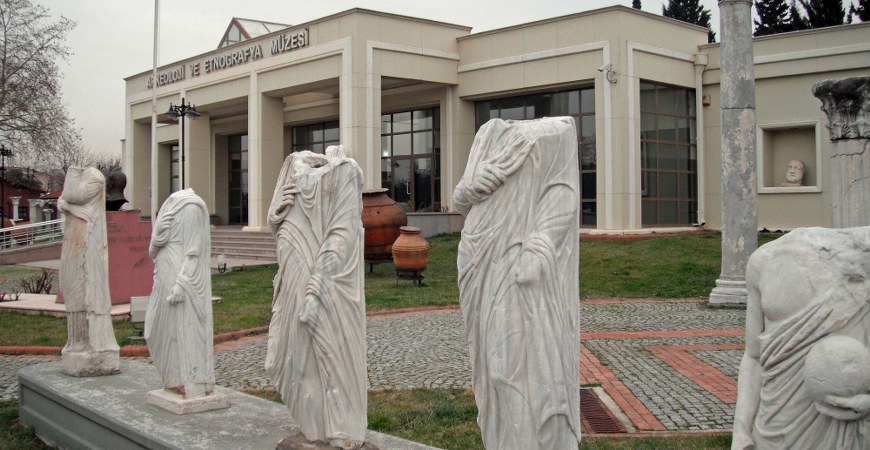The Museums of Izmit-Kocaeli,
First steps to establish a museum in the main city of the province of Kocaeli, Izmit, were taken in 1938. Archaeological findings from excavations at the site of the Izmit Paper Factory and other works from the region were first stored in Merkez and then in Sumer primary school. In 1947 some of the works were taken to the Istanbul Archaeology Museum. In 1965 the historical Hunting House which was being used as the Governor’s Residence was repaired and became lzmit Museum. The museum was opened to the public in 1967. The Hunting Lodge in which Izmit Museum is housed was built by Sultan Abdulaziz in the neo-classical style between 1861 and 1865 and is a two-story building. The ground floor contains archaeological works while the upper floor contains works from the Ottoman period. To the right of the entrance on the ground floor are exhibited a marble bas-relief depicting a chariot race in the Hippodrome, gravestones, and statues from the Roman period; under the stairs are Islamic and antique inscriptions, and busts; to the left of the stairs are statues; and In the central showcase are ceramics, a gold ring and various grave objects found in a tumulus in the eastern necropolis of lzmit.
In the upstairs hall are 1th-century palace objects: A console and mirror, a clock and candlestick set, and in the cases inkstands, kettles, water jugs and bowls, healing soups and a gilded Koran. In the room to the left of the hall are exhibited furniture carrying the coat of arms of Sultan Abdulaziz and Islamic coins. The room to the right has been arranged as Ataturk’s bedroom, since he stayed in this Lodge on June 18, 1922, and January 16, 1923, when he came to lzmit. In the garden of the museum are Roman statues, the lid of a tomb, an Ottoman period shipyard inscription, sacrificial altar stones from graves, pieces of columns, and sarcophagi.
Yarimca Museum:
The Municipality of Yarimca, a sub-province of Kocaeli, established a museum which was opened to the public in 1974. As well as archaeological and ethnographic works the museum also contains modern pictures and sculpture. An important part of the collections was donated by Avni Ozture.



































































































































